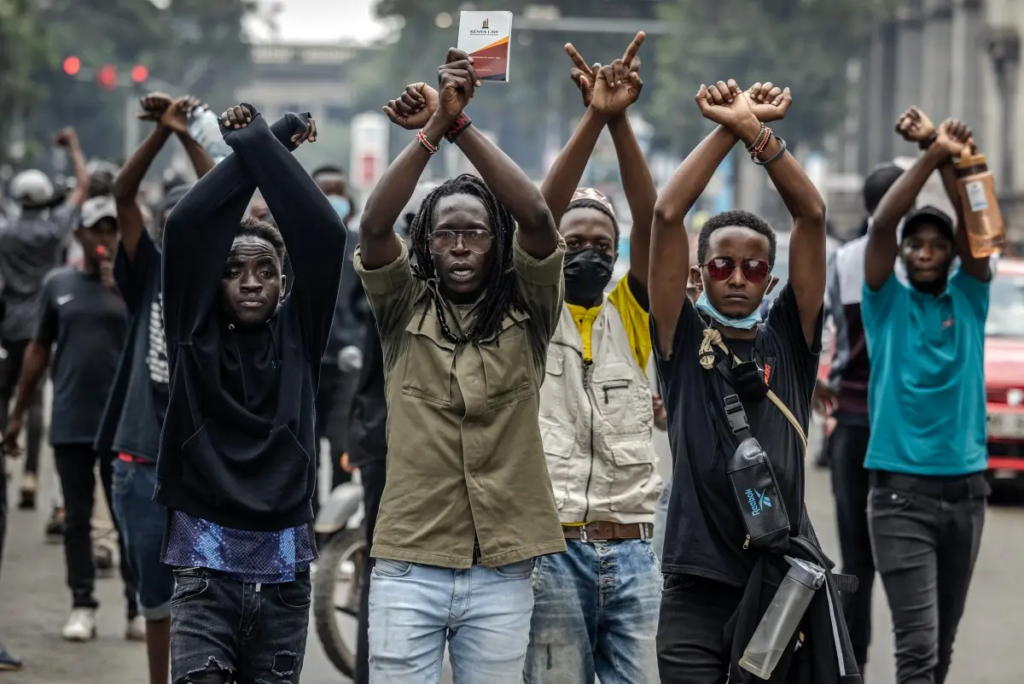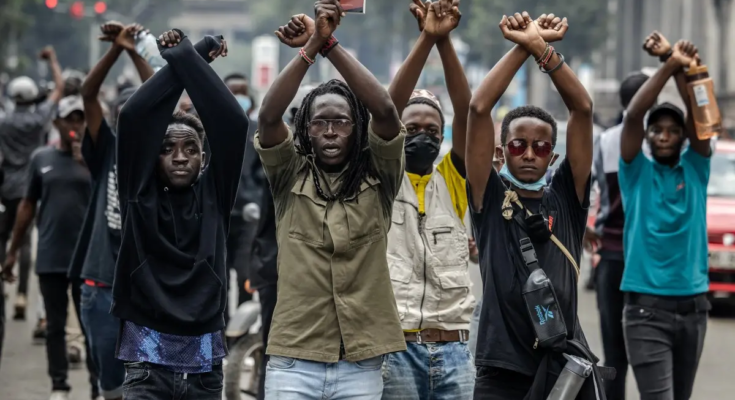By Chiagoziem Abosi

Kenya has been experiencing severe public unrest in recent weeks, similar to the 2020 End SARS rallies in Nigeria. Although the public’s dissatisfaction with government activities gave rise to both revolutions, their outcomes show distinct paths in the struggle for justice and change.
Kenya’s revolution against tax increases
The administration of President William Ruto is the target of the most recent wave of protests in Kenya over a contentious budget package. With the goal of raising an additional $2.7 billion through higher taxes on necessities, the bill seeks to address the nation’s spiraling public debt, which accounts for about 68% of GDP. However, young activists and opposition leaders have fiercely opposed the tax increases, claiming that the burden on already suffering individuals is too enormous.
Tensions erupted on June 25, 2024, when demonstrators stormed the Kenyan Parliament. Security forces used force to quell the unrest, resulting in at least 22 fatalities and several injuries. Large-scale protests have continued in Mombasa and Nairobi despite government efforts to put an end to the disturbance by sending in the military, using tear gas, and using live bullets.

EndSARS: A plea for Nigerian police reform
In 2020, young Nigerians staged the “End SARS” rallies, calling for the disbandment of the Special Anti-Robbery Squad (SARS), which has a reputation for violating human rights. International attention was drawn to the protests, which culminated in the horrific Lekki Toll Gate event on October 20, 2020, which saw numerous people killed as security forces opened fire on nonviolent protestors.
The End SARS campaign was successful in pressuring the Nigerian government to dissolve SARS and make more extensive police reforms, even in the face of the crackdown. Critics counter that there are still reports of police violence nationwide and that these promises have not yet resulted in meaningful changes.
Comparative Results
Although the protests have different immediate effects, they are both motivated by social and economic grievances.
The dissolution of SARS was a major symbolic win for the End SARS protests, while its long-term effects are still up for debate. Conversely, the protests in Kenya have not resulted in any tangible concessions from the administration. Although President Ruto’s refusal to sign the finance bill indicated that policies may need to be reviewed, the continuous disturbance implies that demonstrators’ demands are not being met in full.
A joint battle for justice
The demonstrations in Kenya and Nigeria both highlight a larger opposition to perceived unfair government practices. They draw attention to the strength of movements headed by young people in questioning authority and calling for responsibility. The Kenyan protests are still in the early stages, but comparing them to the End SARS movement offers a perspective on how they might turn out.
The lessons from Nigeria’s experience serve as a reminder to Kenya as it navigates this turbulent time, that significant change frequently necessitates persistent pressure and caution. It remains to be seen if the demonstrations in Kenya will result in significant reforms, but the echoes of End SARS highlight the need for justice and fair governance that unites people everywhere.








